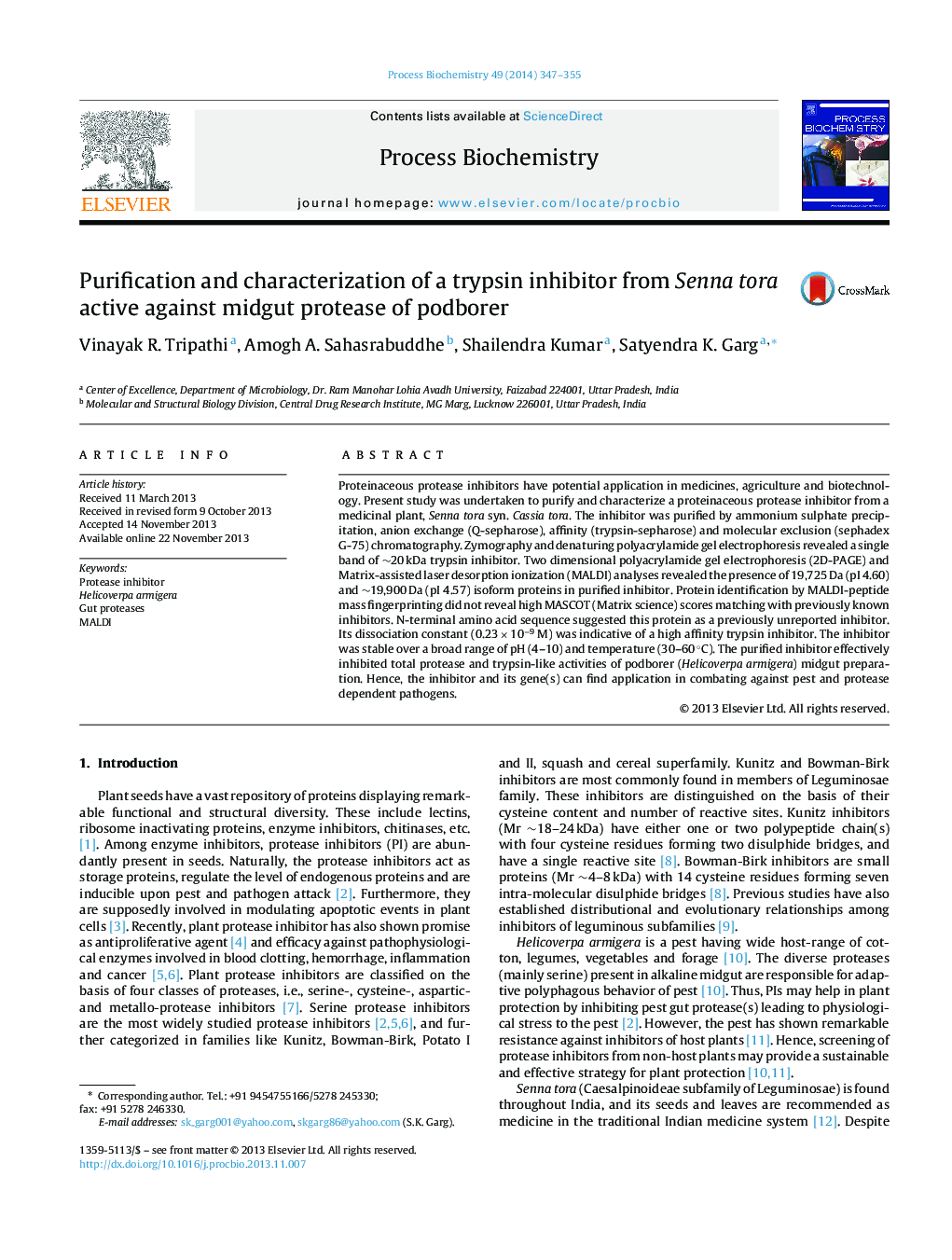| Article ID | Journal | Published Year | Pages | File Type |
|---|---|---|---|---|
| 34803 | Process Biochemistry | 2014 | 9 Pages |
•This is the first report on characterization of Senna tora trypsin inhibitor (TI).•The inhibitor is monomeric with two isoforms [19,725 & ∼19,900 Da] having acidic pI.•The TI is stable in wide pH (2–12), temperature (30–100 °C) range with Ki 0.23 nM.•MALDI-PMF & N-Terminal sequence studies suggest it as previously unreported trypsin inhibitor.•Can be employed in pest management as it inhibited polyphagous pest gut proteases.
Proteinaceous protease inhibitors have potential application in medicines, agriculture and biotechnology. Present study was undertaken to purify and characterize a proteinaceous protease inhibitor from a medicinal plant, Senna tora syn. Cassia tora. The inhibitor was purified by ammonium sulphate precipitation, anion exchange (Q-sepharose), affinity (trypsin-sepharose) and molecular exclusion (sephadex G-75) chromatography. Zymography and denaturing polyacrylamide gel electrophoresis revealed a single band of ∼20 kDa trypsin inhibitor. Two dimensional polyacrylamide gel electrophoresis (2D-PAGE) and Matrix-assisted laser desorption ionization (MALDI) analyses revealed the presence of 19,725 Da (pI 4.60) and ∼19,900 Da (pI 4.57) isoform proteins in purified inhibitor. Protein identification by MALDI-peptide mass fingerprinting did not reveal high MASCOT (Matrix science) scores matching with previously known inhibitors. N-terminal amino acid sequence suggested this protein as a previously unreported inhibitor. Its dissociation constant (0.23 × 10−9 M) was indicative of a high affinity trypsin inhibitor. The inhibitor was stable over a broad range of pH (4–10) and temperature (30–60 °C). The purified inhibitor effectively inhibited total protease and trypsin-like activities of podborer (Helicoverpa armigera) midgut preparation. Hence, the inhibitor and its gene(s) can find application in combating against pest and protease dependent pathogens.
